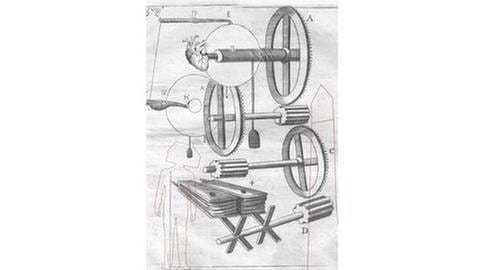
"Was ist also Zeit? Wenn mich niemand fragt, so weiß ich es; will ich es aber jemandem auf seine Frage hin erklären, so weiß ich es nicht. Doch soviel kann ich gewiss sagen: ginge nichts vorüber, so gäbe es keine Vergangenheit, käme nichts heran, so gäbe es keine Zukunft, bestände nichts, so gäbe es keine Gegenwart. Wie kann man aber sagen, dass jene zwei Zeiten, Vergangenheit und Zukunft, sind, wenn die Vergangenheit nicht mehr und die Zukunft noch nicht ist? Wäre dagegen die Gegenwart beständig gegenwärtig, ohne sich je in die Vergangenheit zu verlieren, dann wäre sie keine Zeit mehr, sondern Ewigkeit. Wenn also die Gegenwart, um Zeit zu sein, in die Vergangenheit übergehen muss, wie können wir dann sagen, dass sie an das Sein geknüpft ist, da der Grund ihres Seins darin besteht, dass es sofort in das Nichtsein übergeht? Also müssen wir in Wahrheit sagen: die Zeit ist deshalb Zeit, weil sie zum Nichtsein hinstrebt."
(Augustinus von Hippo, Bekenntnisse, XI, 14, 17)
In Mario Verandis Klanginstallation sind der Mechanismus und die Klänge der traditionellen Schwarzwälder Kuckucksuhr die Arbeitsmaterialien, mittels derer über zwei verschiedene Manifestationen der Zeitwahrnehmung nachgedacht wird: die Uhrzeit und das Zeitgefühl. Die Uhrzeit ist eine gemessene Zeit, eingeteilt in die Dimensionen Vergangenheit, Gegenwart und Zukunft. Dagegen ist das Zeitgefühl ein viel komplexerer psychologischer Prozess. Klang und Musik entfalten sich in der Zeit und machen somit ihr Verstreichen hörbar. Gleichwohl können wir das Zeitgefühl beim Hören von Musik leicht verlieren.
"Zeit|Stück" ist dem Andenken an Klaus Rahm († 2014) gewidmet.
English
"What, then, is time? If no one asks me, I know what it is. If I wish to explain it to him who asks me, I do not know. Yet I say with confidence that I know that if nothing passed away, there would be no past time; and if nothing were still coming, there would be no future time; and if there were nothing at all, there would be no present time. But, then, how is it that there are the two times, past and future, when even the past is now no longer and the future is now not yet? But if the present were always present, and did not pass into past time, it obviously would not be time but eternity. If, then, time present, if it be time, comes into existence only because it passes into time past, how can we say that even this is, since the cause of its being is that it will cease to be? Thus, can we not truly say that time is only as it tends towards nonbeing?"
(Augustine of Hippo, Confessions, XI, 14, 17)
In Mario Verandis sound installation the mechanism and sounds of the traditional Black Forest Cuckoo clock are the working materials to reflect on two distinct manifestations of time perception: clock time and experienced time. Clock time is time measured by the dimensions of past, present and future. Experienced time, on the other hand, is a more complex psychological process. Sound and music unfold in time and by doing so they make the passage of time audible. Nevertheless we can easily loose a sense of time when listening to music: "[...] music, that mysterious form of time."
(Jorge Luis Borges)
„Zeit|Stück“ is dedicated to the memory of Mr. Klaus Rahm († 2014).
- Festivaljahrgänge
- Donaueschinger Musiktage 2015
- Themen in diesem Beitrag
- Mario Verandi, Zeit|Stück. Klanginstallation
- Verwandte Beiträge
- Kuckuck Donaueschingen! Mit Mario Verandi im Donaueschinger Souvenirladen, Klanginstallationen von Schulz, Orts, Verandi und de Vega